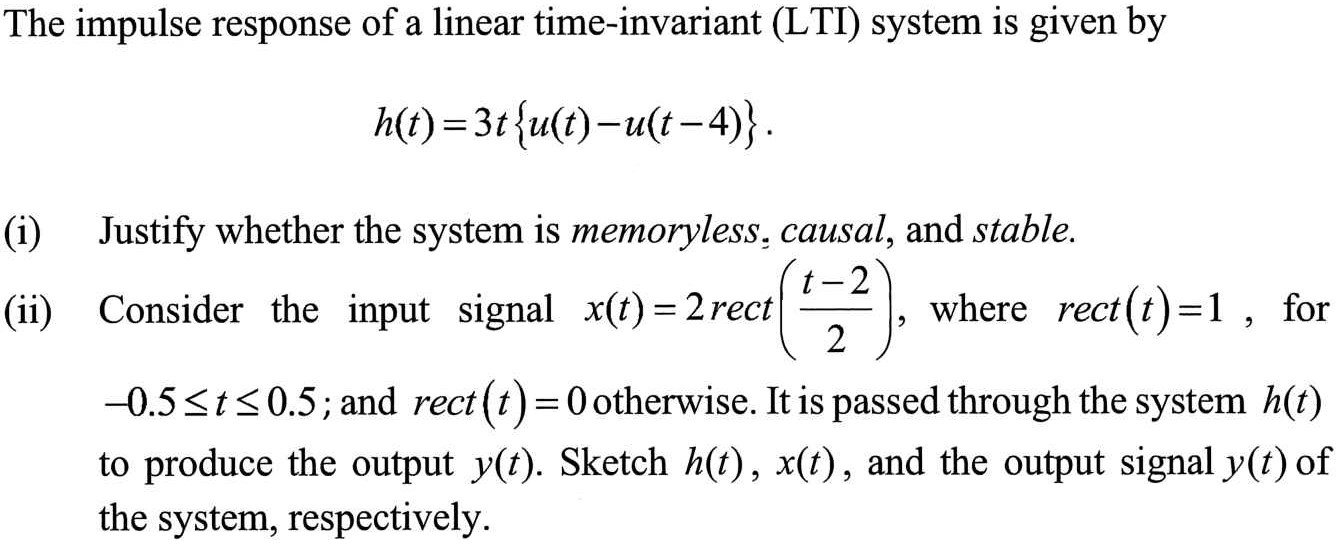The impulse response of a linear time-invariant (LTI) system is given by h(t) = 3 t{u(t) − u(t−4)}. (i) Justify whether the system is memoryless, causal, and stable. (ii) Consider the input signal x(t) = 2 rect(t−2 2), where rect(t) = 1, for −0.5 ≤ t ≤ 0.5; and rect(t) = 0 otherwise. It is passed through the system h(t) to produce the output y(t). Sketch h(t), x(t), and the output signal y(t) of the system, respectively.
